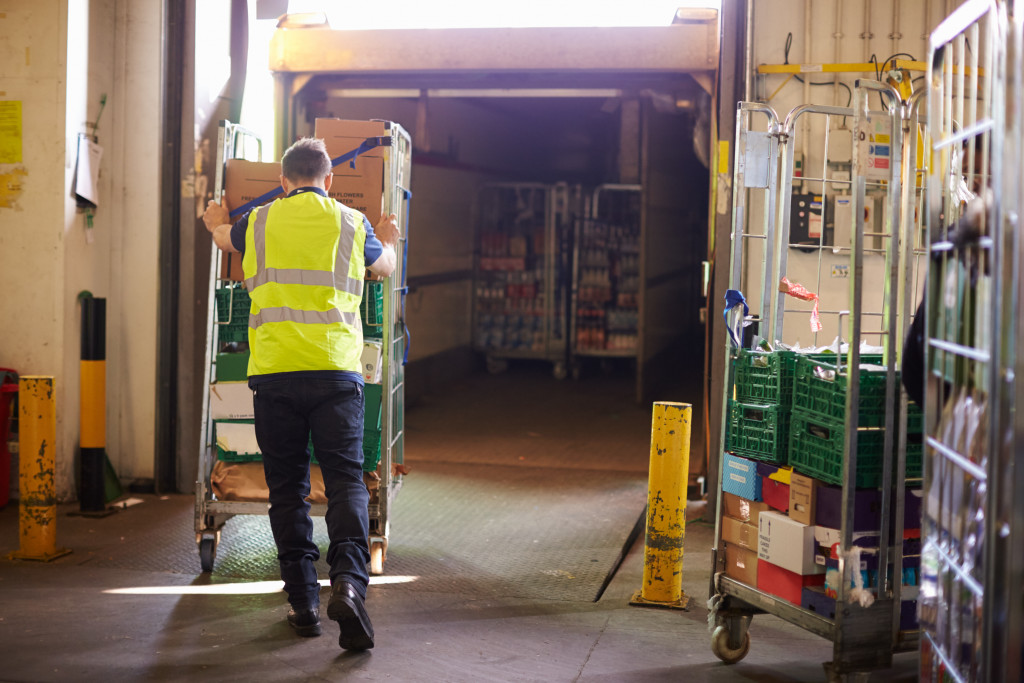- Efficient and safe material handling requires modern equipment such as lift trucks and automated systems.
- Space management is critical, especially in countries like Singapore, where land is scarce.
- Effective inventory management strategies, including using technology for tracking and monitoring, can improve supply chain efficiency.
- Industries are prioritizing sustainability practices, from using renewable energy sources to promoting recycling.
The goal of any industry is to manage its materials to maximize productivity and minimize costs efficiently. However, material handling challenges can pose a significant hurdle to achieving this goal. For instance, improper space management can lead to cluttered and disorganized workspaces, decreasing efficiency and increasing safety hazards.
Additionally, with a growing focus on sustainability, industries are facing the added challenge of reducing their environmental impact while still maintaining optimal material handling practices. To overcome these challenges, industries need to implement key strategies that address current issues and anticipate the future.
Modern Material Handling Equipment: Efficiency and Safety
When handling materials, having the right equipment is crucial for ensuring efficiency and safety. From conveyor systems to forklifts, utilizing modern material handling equipment can increase productivity and reduce the risk of accidents and injuries.
The Role of Lift Trucks in Streamlining Operations
Lift trucks, or forklifts, are one of the industries most commonly used material handling equipment. These versatile machines can easily lift and move heavy loads, making them an essential component of any warehouse or manufacturing facility.
With technological advancements, using a lift truck has become more efficient and safer than ever. Features such as automated controls and sensors help to prevent accidents and improve accuracy, while electric-powered lift trucks reduce emissions and contribute to a more sustainable workplace.
Advancements in Automated Material Handling Systems

The advancements in automated material handling systems have revolutionized the industry. Automated guided vehicles (AGVs) and robotic arms are now being used to transport, sort, and stack materials with minimal human intervention. This not only increases efficiency but also reduces the risk of human error.
Moreover, these systems can be customized to fit specific space constraints, allowing for better space management within industries. With the ability to handle a variety of materials and tasks, automated material operating systems offer a versatile solution for streamlining operations.
Overcoming Common Material Handling Challenges
Of course, all industries face their unique material handling challenges. However, some common issues can be addressed with the right strategies and equipment.
Addressing Space Constraints and Layout Efficiency
Space management is a critical aspect of material handling. With limited space, finding an efficient layout that allows for smooth movement and storage of materials can be challenging. This is where modern equipment such as automated guided vehicles and high-rise stackers can come in handy.
In Asian countries where space is often at a premium, these solutions can help industries make the most of their limited space while maintaining efficiency and safety. For instance, in Singapore, where land is scarce and expensive, strategically utilizing modern material handling equipment can help businesses optimize their operations and reduce costs.
Implementing Effective Inventory Management Strategies
Strategic inventory management is another crucial factor in tackling material handling challenges. By utilizing barcode scanning and RFID tracking technology, industries can accurately monitor their inventory levels and avoid overstocking or understocking.
This helps maintain a streamlined supply chain and reduces the risk of lost or misplaced materials. With accurate inventory data, industries can make informed decisions about material flow and storage, improving efficiency and cost savings.
Embracing Sustainability and Ergonomics in Material Handling
Gone are the days when material handling focused solely on productivity and cost. With a growing demand for sustainable practices, industries are now faced with the challenge of reducing their environmental impact while maintaining optimal material handling practices.
Eco-Friendly Practices in Industrial Operations

From using renewable energy sources to implementing recycling programs, industries are finding ways to reduce their carbon footprint and promote sustainability. In material handling, eco-friendly practices can include utilizing electric-powered lift trucks, reducing packaging waste, and optimizing transportation routes.
Prioritizing Ergonomics for Employee Safety
Material handling equipment has also evolved in terms of ergonomics to prioritize the safety and well-being of employees. For instance, ergonomic lift trucks with adjustable seats and controls help to reduce the risk of injuries such as back strain.
By investing in modern equipment that promotes sustainability and ergonomics, industries can create a safer and healthier workplace for their employees while improving overall efficiency.
Final Thoughts
Tackling material handling challenges in industries requires a combination of the right strategies and modern equipment. From utilizing automated systems to addressing space constraints and embracing sustainability, industries can overcome challenges and optimize their operations for increased efficiency, safety, and cost savings. With continuous advancements in technology, there is no doubt that material handling will continue to evolve and play a crucial role in the success of industries worldwide.




